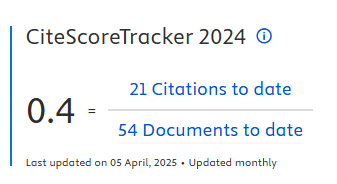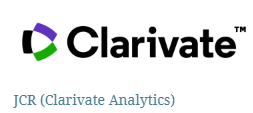Cumulative learning as an innovation source: the case of a large company in the cosmetics, toiletry and fragrance industry in Brazil
DOI:
https://doi.org/10.5585/iji.v10i1.21015Keywords:
Cumulative learning, Innovation, Neo-Schumpeterian theory, Cosmetics, Toiletry and Fragrance Industry (CTF) in Brazil.Abstract
Objective of the study: To identify and analyze the evidence of the learning processes such as “learn by doing”, “learn by usage” and “learn by interacting” as a source of innovation in a large company in the Cosmetics, Toiletry and Fragrance Industry (CTF) within Brazil.
Methodology/approach: A qualitative study was carried out, using a data collection procedure based on interviews with employees of a large company in the CTF industry within Brazil.
Originality/Relevance: A company that seeks innovation is not restricted solely by Research and Development (R&D), but must also consider, as a source of innovation, the continuous learning by its internal and external environment which provides it with a tacit knowledge that differentiates it from its competitors. Despite the CTF sector being one of the most important in the world, with Brazil being one of its biggest players, there is a lack of published articles for this sector, which address the issues of the learning process as a source of innovation.
Main results: The results show the existence of the learning process as a source of innovation in formal and informal routines, especially for “learning by interacting”, in generating pioneering innovations in the selected company.
Theoretical/methodological contributions: Discuss and demonstrate the role of cumulative learning as a source of innovation for companies.
Social contributions / for management: It is hoped that this study will motivate future studies in the pursuit to highlight the role of cumulative learning in generating innovation in companies.
Downloads
References
Abdi Cosmética. (2008). Agência Brasileira de Desenvolvimento Industrial. Relatório de Acompanhamento Setorial: Cosméticos. Retrieved from https://www.eco.unicamp.br/neit/images/stories/arquivos/RelatorioABDI/cosmeticos_vol_I_maio2008
Associação Brasileira da Indústria de Higiene Pessoal, Perfumaria e Cosméticos [Abhipec]. (2019). Anuário ABIHPEC 2019. Retrieved from https://abihpec.org.br/publicacao/anuario-abihpec-2019/
Associação Brasileira da Indústria de Higiene Pessoal, Perfumaria e Cosméticos [Abhipec]. (2019-2020). Caderno de Tendências, Higiene Pessoal, Perfumaria e Cosméticos 2019-2020. Retrieved from https://abihpec.org.br/publicacao/caderno-de-tendencias-2019-2020/.
Arndt F., Fourne S. P. L., e MacInerney-May, K. (2018) The merits of playing it by the book: routine versus deliberate learning and the development of dynamic capabilities. Industrial and Corporate Change, Oxford, 27(4), 723–743. https://doi.org/10.1093/icc/dty005
Artikel, B. S. (2020). A splash of colour. European Business. Retrieved from https://www.european-business.com/weckerle/portrait/ Bardin, Laurence. (2016). Análise de conteúdo. São Paulo, SP: Edições 70.
Bastos, C. P. & Britto, J. (2017). Inovação e geração de conhecimento científico e tecnológico no Brasil: uma análise dos dados de cooperação da Pintec segundo porte e origem de capital. Revista Brasileira Inovação, Campinas (SP), 16(1), 35-62. Retrieved from https://periodicos.sbu.unicamp.br/ojs/index.php/rbi/issue/view/1379
Banco Nacional de Desenvolvimento Econômico e Social [BNDES]. (2017). Panorama da Indústria de higiene pessoal, perfumaria e cosméticos. BNDES Setorial, Rio de Janeiro, 25, 131-156. Retrieved from http://web.bndes.gov.br/bib/jspui/handle/1408/6541
Cantwell, J. & Fai, F. (1999). Firms as the source of innovation and growth: the evolution of technological competence. Journal Evolutionary Economics, 9, 331-366. https://doi.org/10.1093/icc/dty005
Celadon, K. & Sbragia, R. (2015). Absorptive Capacity And Open Innovation In The Brazilian.
Cosmetics Industry. Proceedings of the International Management Conference, Faculty of Management, Academy of Economic Studies, Bucharest, Romania, vol. 9(1), pages 333-344, November. Retrieved from https://ideas.repec.org/a/rom/mancon/v9y2015i1p333-344.html
Creswell, John W. (2021) Projeto de Pesquisa – Métodos qualitativo, quantitativo e misto. 5a. ed. Porto Alegre, RS: Ed. Artmed.
Cruz, S. & França, P. X. N. (2008). Estratégias Competitivas: O Caso da Indústria de Cosmético no Brasil. Veredas FAVIP Revista Eletrônica de Ciências, 1(1), 21-27. Retrieved from http://blog.devrybrasil.edu.br/ojs/index.php/veredas1/article/view/132
Demircioglu M.A., Audretsch D.B., Slaper T.F. (2019) Sources of innovation and innovation type: firm-level evidence from the United States Industrial and Corporate Change, Oxford, 28(6), 1365–1379. https://doi.org/10.1093/icc/dtz010
Dosi, G., Silverberg, G. & Orsenigo, L. (1988). Innovation, Diversity and Difusion: A self-organization model. The Economic Journal, 98, 1032-1054. https://doi.org/10.2307/2233718
Dosi, G., Malerba, F., Marsili, O. & Orsenigo, L. (1997). Industrial structure and Dynamics: evidence, interpretations and puzzles. Industrial and Corporate Change, Oxford University, 6(1), 3-24. https://doi.org/ 10.1093/icc/6.1.3
Dosi, G., Pereira, M. & Virgilitto, M. (2017a). On the robustness of the fat-tailed distribution of firm growth rates: a global sensitivity analysis. Journal of Economic Interaction and Coordination, Springer; Society for Economic Science with Heterogeneous Interacting Agents, vol. 13(1), pages 173-193, April. https://doi.org/10.1007/s11403-017-0193-4
Dosi, G., Pereira, M. & Virgilitto, M. (2017b). The footprint of evolutionary processes of learning and selection upon the statistical properties of industrial dynamics. Industrial and Corporate Change, Oxford: Oxford University, (26)2, 187-210. https://doi.org/ 10.1093/ICC/DTW044
Elsner, W., Heinrich, T. & Schwardt, H. (2015). The Microeconomics of Complex Economies: Evolutionary, Institutional, Neoclassical and Complexity Perspectives. Germany: University of Bremen.
Freeman, C. (1974). The Economics of Industrial Innovation (L. Soete, Ed.) (1st ed.). Routledge.
London, UK: Penguin Modern Economics text. https://doi.org/10.4324/9780203357637 Freeman, C. (1988). Structural crises of adjustment, business cycles and investments behavior.
In G. Dosi et al. Technical Change and Economic Theory. (pp. 38-66). London, UK: Francis Pinter. https://doi.org/10.1177/017084069001100116
Fritz, M. S. & Souza, C. G. (2006). Inovação na Indústria de Cosméticos – Casos de Empresas do Setor. Anais do XXXIV Congresso Brasileiro de Ensino de Engenharia. Retrieved from https://silo.tips/download/inovaao-na-industria-de-cosmeticos-casos-de-empresas-do-setor
Gallas, J. C., Vargas, S. M. L. & Lenzi, F. C. (2015). A indústria de cosméticos sob a perspectiva do empreendedorismo e da capacidade dinâmica. Revista Eletrônica de Estratégia & Negócios, 8(1). https://doi.org/10.19177/REEN.V8E12015170-198
Gil, A. C. (2008). Métodos e Técnicas de Pesquisa Social (6a. ed.) São Paulo, SP: Ed. Atlas.
Guo J., Guo B., Zhou J., Wu X. (2020). How does the ambidexterity of technological learning routine affect firm innovation performance within industrial clusters? The moderating effects of knowledge attributes. Technological Forecasting and Social Change, Volume 155, 2020, CHINA: Elsevier Ltda. https://doi.org/10.1016/j.techfore.2020.119990
Kumar, S. (2005). Exploratory analysis of global cosmetic industry: major players, technology and market trends. Technovation, Volume 25, Issue 11, 2005, Pages 1263-1272, USA: Elsevier Ltda. https://doi.org/10.1016/j.technovation.2004.07.003
Kumar, S., Massie, C. & Dumonceaux, M. D. (2006). Comparative innovative business strategies of major players in cosmetic industry. Industrial Management & Data Systems, 106(3), 285-306. https://doi.org/10.1108/02635570610653461
Lundvall, B. A. (2001). Políticas de Inovação na Economia do Aprendizado. Primeira abordagem na contribuição ao projeto “Produtividade Local por Amostragem Setorial e Sistemas de Inovação” no Brasil: novas políticas industriais e tecnológicas (1º de agosto de 2000). Parcerias Estratégicas, 6, (10), 200-218. http://seer.cgee.org.br/index.php/parcerias_estrategicas/article/viewFile/149/143
Lundvall, B. A. (2016). From the Economics of Knowledge to the Learning Economy. In B. A.
Lundvall. The Learning Economy and the Economics of Hope (pp. 133-154)). London, UK: Anthem Press. Retrieved from https://library.oapen.org/bitstream/handle/20.500.12657/31613/626406.pdf
Lundvall, B. A., Jensen, M. B., Johnson, B., Lorenz E. A. (2016). Forms of Knowledge and modes of Innovation. In B. A. Lundvall. The Learning Economy and the Economics of Hope (pp. 155-182). London, UK: Anthem Press. Retrieved from https://library.oapen.org/bitstream/handle/20.500.12657/31613/626406.pdf
L’oreal. Anuário (2019). Retrieved from https://www.loreal-finance.com/eng/annual-report.
Malerba, F. (1992). Learning by firms and Incremental Technical Change. The Economic Journal, 102(413), 845-859. https://doi.org/10.2307/2234581
Malerba F. & Pisano G. P. (2019). Innovation, competition and sectoral evolution: an introduction to the special section on Industrial Dynamics. Industrial and Corporate Change, Oxford, 28(3), 503-510. https://doi.org/10.1093/icc/dtz017
Nelson, R. & Kim, L. (2005). Tecnologia, Aprendizado e Inovação. Campinas, SP: Ed Unicamp.
Nelson, R. R., & Winter, S. G. (2002). Evolutionary Theorizing in Economics. The Journal of Economic Perspectives, 16(2), 23–46. Retrieved from http://www.jstor.org/stable/2696495
Nelson, R., Winter, S. G. (2005). Uma teoria Evolucionária da Mudança Econômica. Campinas, SP: Ed. Unicamp.
Organização para a Cooperação e Desenvolvimento Econômico [OECD]/Eurostar (2018), Oslo.
Manual 2018: Guidelines for Collecting, Reporting and Using Data on Innovation. (4th Edition). The Measurement of Scientific, Technological and Innovation Activities, OECD Paris/Eurostat, Luxembourg. https://doi.org/10.1787/9789264304604-en
Pintec (2017). Instituto Brasileiro de Geografia e Estatística – IBGE. Pesquisa Industrial de Inovação Tecnológica. Rio de Janeiro, RJ: IBGE. Retrieved from https://biblioteca.ibge.gov.br/index.php/biblioteca-catalogo?view=detalhes&id=2101706
Ribeiro, M. T. F. & Tigre, P. B. (2006). Gestão da inovação: a economia da tecnologia no Brasil. Revista Brasileira de Inovação, Campinas, SP, 5(2), 479-785. https://doi.org/10.20396/rbi.v5i2.8648937
Rosemberg, N. (1982) Inside the box – Technology and Economics. Cambridge: Cambridge University Press. https://doi.org/10.1017/CBO9780511611940
Schumpeter, J. A. (1982). A Teoria do Desenvolvimento Econômico. Ed. Abril Cultural. (Coleção Os Economistas).
Tessarin, M. S., Suzigan, W. & Guilhoto, J. J. M. (2020). Cooperação para inovar no Brasil: diferenças segundo a intensidade tecnológica e a origem do capital das empresas. Estudos Econômicos, São Paulo, FEA – USP 50(4), 671-704. https://doi.org/10.1590/0101-41615044mwj
Vilha, A. P. de O. M. (2009). Gestão da Inovação na Indústria Brasileira de Higiene Pessoal, Perfumaria e Cosméticos: uma análise sob a perspectiva do desenvolvimento sustentável. (Tese de doutorado). Universidade Estadual de Campinas, UNICAMP, Instituto de Geociências, Campinas. Retrieved from https://bdtd.ibict.br/vufind/Record/CAMP_c0b7ffbb56b6d6c76e124307b69687a3
Zucoloto, G. F., Cassiolato, J. E. (2012). Desenvolvimento Tecnológico Por Origem de Capital: A Experiência Brasileira Recente. Revista Brasileira de Inovação, 12, (1), 133-170. https://doi.org/10.20396/rbi.v12i1.8649057
Winter, S. G. (1988). On Coase, Competence, and the Corporation. Journal of Law, Economics, & Organization, 4(1), 163–180. http://www.jstor.org/stable/765019
Downloads
Published
How to Cite
Issue
Section
License
Copyright (c) 2022 Marcio Garcia, João Batista Pamplona, Marco Antonio Pinheiro da Silveira

This work is licensed under a Creative Commons Attribution-NonCommercial-ShareAlike 4.0 International License.
- Abstract 1587
- PDF 536













